| March 2023 | | | You might have seen a new face around reception over the past weeks- little Brantley! Our fabulous leader and Practice Manager Rosie is making a transition back to work after the birth of Brantley. Rosie and Brantley are sneaking around to help out as they can. A friendly reminder not to come to the vet when you are sick, and let us know so we can minimise infection risks to our staff and families. Here's a photo of the happy family! | | | Book Online |
|
|
| Float and trailer parking | | | When you get to the carpark at the front of the clinic, you have probably noticed that there is a float / trailer parking off to the LEFT. Please try to keep this free of cars so that our large animal clients, patients and staff are kept as safe as possible. | | | Contact Us |
|
|
| 7 things to consider when looking for a new puppy | | | Breed: It is important to do your research before purchasing or rescuing a new puppy. There are a lot of things to consider when picking a breed of dog to fit into your lifestyle. It may feel like a no brainer to get the same breed you had previously or that you had growing up yourself, but will it fit into your current stage of life? This quiz from Dogs NSW (button below) might help narrow down the list for you and give you questions to consider when choosing your next pooch.
Breeder: Dog breeding is thankfully becoming a lot more of a regulated business then the hobby it once was which in turn is helping to reduce/stop puppy farming, unethical and irresponsible breeding. Again, Dogs NSW (button below) is a good place to start your search for a responsible breeder.
Both parents should be of sound health, breed specific genetically tested to reduce risk of passing on health concerns to your pup and have a desirable temperament. In an ideal world, you would meet the parents of your puppy and view the conditions in which they are living before purchasing. Nicely natured parents tend to grow nicely natured puppies. | | | Dogs NSW |
|
|
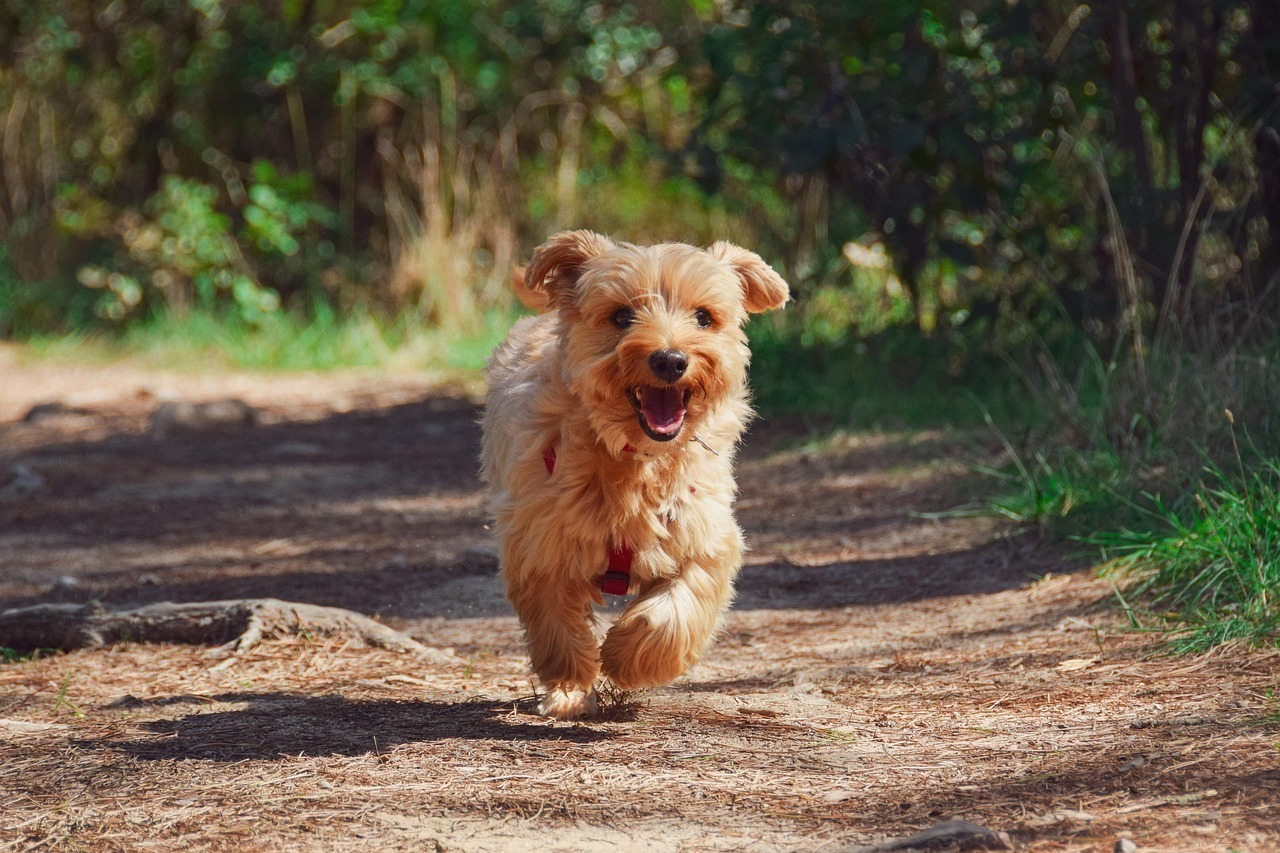 | | 7 things to consider when looking for a new puppy... continued | | | Age: Puppies need to be with their mother and litter mates until they are at least 8 weeks old. This is a critical stage in their social development where they take in a lot of important information from these interactions to give them the best chance of growing up to be a happy & well-rounded companion. Puppies that are rehomed prior to 8 weeks often have a harder time with learning, including bite inhibition (more mouthing & biting harder/more often), more difficulty with toilet training and can generally be more anxious about their world. Adaptil collars can help to make the transition to their new home easier.
Early & appropriate socialization: Good socialization is best achieved in the first 6 months but more specifically, before 16 weeks of age (or even younger for some breeds, like German Shepherds- below). Puppies should be safely exposed to different people, places, noises, textures & animals in a non-threatening manner and at a pace directed by the puppy. The best way to help that no harm is done during this important stage of development is to enroll early into a reputable and qualified positive reinforcements dog trainers’ Puppy Pre-school classes. Bridget runs classes here at Orange Vet Hospital, and Deb the Dog Lady runs an excellent program on weekends. These classes can have wait lists, so we recommend enquiring about classes before your puppy arrives in your care.
Pet insurance: Along with the increase in cost of living, the cost of owning a dog has also gone up in many ways. Modern animal medicine and access to specialist care means that for a lot of cases there are more options available to treat some conditions & potentially save your pet’s life. As you would expect, this can come at a high cost. Pet insurance can make these options more available without the added pressure of deciding if you can afford to proceed with treatment. We cannot recommend a specific company, but we encourage you to do your research, speak to other pet owners, speak with your health insurance provider, and see if this is something you can see value in.
Desexing: Will you get your puppy desexed? Or are you planning on breeding from him or her? The generic answer 5-10 years ago to this question was that if you’re not planning on breeding from your dog, we recommended desexing by 6 months of age. In more recent years, there is more information to tell us this isn’t always the best advice for all breeds. We recommend having a consultation with your trusted veterinarian to discuss if/when to desex depending on your dogs breed, health & temperament.
Training: Just like the Australian Veterinary Association & RSPCA; we only recommend Positive Reward based training. For some dogs, this is treat based, for some dogs, it is toy based, for other dogs, it may be affection based. The button below has more information on how & why.
Contact our team if you need any further advice. |
|
|
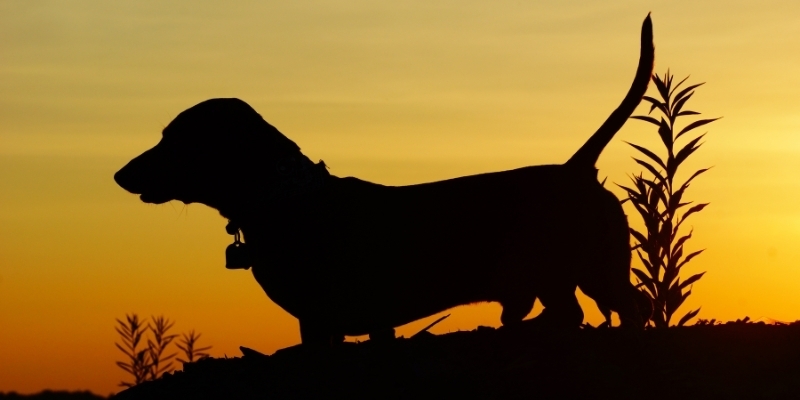 | | Keeping the rolls off that sausage | | | Did you know that breeds such as dachshunds, corgis and basset hounds get their characteristic ‘sausage’ body shape from a developmental condition called chondrodystrophy? Their silhouette may be iconic, but unfortunately, these dogs have a much higher risk of spinal disease over their lifetimes. So, let’s take a lengthy look at what can be done to help support the health of these sausage-shaped pets.
Have you heard of chondrodystrophy?
Chondrodystrophy is a condition that causes abnormal cartilage development. Breeds affected by chondrodystrophy will have long bodies and short legs. The legs often also have some degree of bowing, and sometimes a misalignment of bones in the elbow joints too.
How does chondrodystrophy lead to spinal problems?
Dogs with chondrodystrophy are highly prone to intervertebral disc disease (IVDD).
IVDD is a disease that affects the spinal column, involving deterioration in the cushion-like discs that sit between individual bones of the spine. In chondrodysplastic dogs, one or several of these intervertebral discs can harden over time and then suddenly pop out, causing compression of the spinal cord or spinal nerves. This can lead to severe pain and sometimes difficulty walking or toileting.
In some cases, IVDD can be managed with pain relief and a period of strict cage confinement but in more severe cases, like once the patient cannot walk on their own, the pet may require emergency surgery to relieve pressure on their spinal cord.
How can we support chondrodysplastic dogs?
If you have a chondrodysplastic dog, one of the most effective protective measures is to maintain a healthy weight, a healthy diet and exercise regime, to keep them in a slim, fit body condition that reduces strain on their joints. There is no current evidence that discouraging these breeds from jumping up and down will actually prevent IVDD, but you can consider pet ramps if your pet has any diagnosed spinal or joint issues to help reduce flare-ups. One of the biggest issues is when a little sausage dog goes and does activities that it is not conditioned to doing- like running up and down stairs at a holiday home.
We also advise considering pet insurance before obtaining a chondrodysplastic pet, in case they require specialist interventions, such as advanced spinal imaging or specialist surgery at any point in their life. Veterinary care has advanced considerably over the past decades, and as such, so too have veterinary costs.
Ask our knowledgeable veterinary team for more information on supporting your dog’s joint health. |
|
|
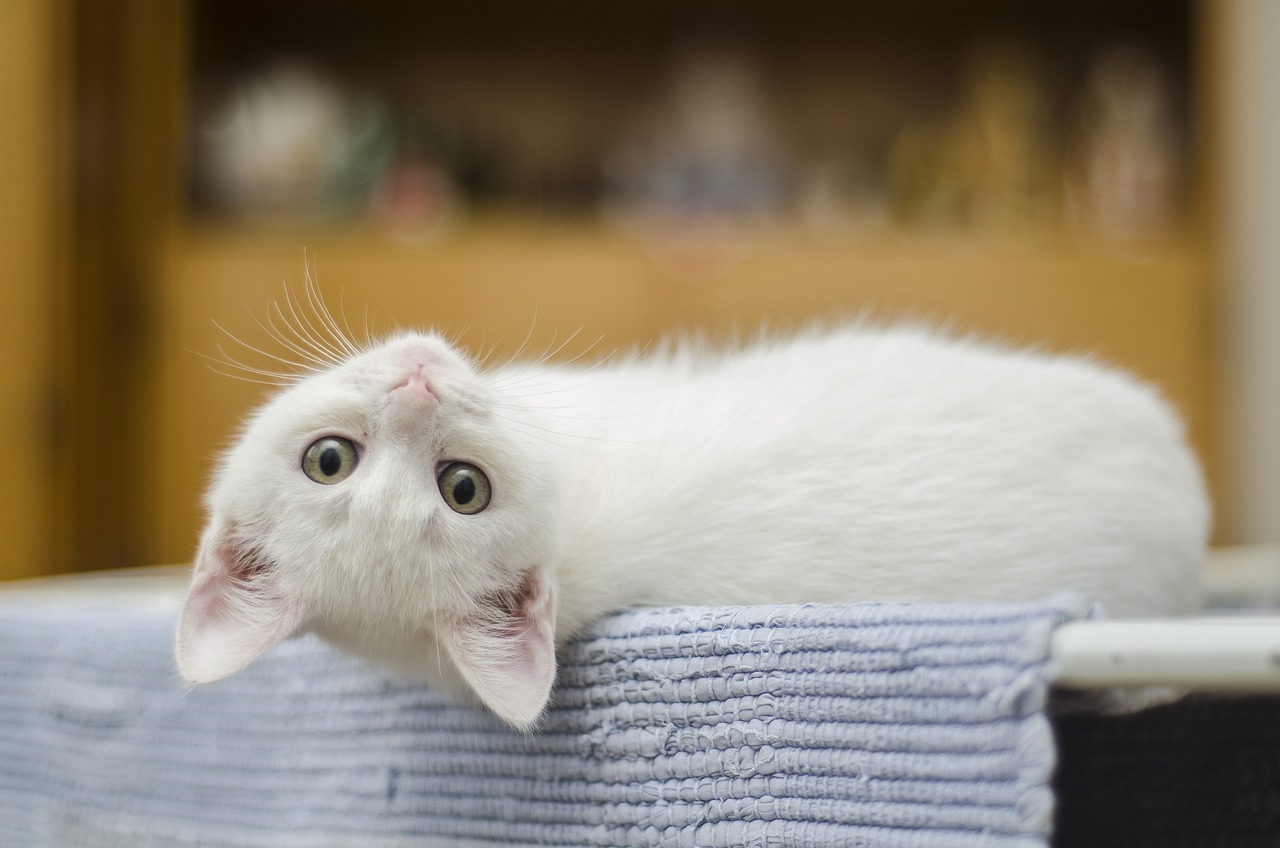 | | Pardon me? Deaf pets | | | We have all at one time snuck up on a resting puppy or kitten and startled it awake! We may have giggled at its reaction, but did you stop and think that maybe it just couldn’t hear you? Deafness is quite common in our pets but, that doesn’t mean they won’t be an amazing companion! We as pet owners just need to change our ways of training and communicating with them, a bit differently.
What is Deafness?
“Deafness is the absence of perception of sound, and reduced hearing are common in dogs and cats, and to a lesser extent in other species.”- MSD Veterinary Manual
What are the Causes of Juvenile Deafness?
Congenital Deafness
Is the most common cause of hearing loss in animals after 1-3 weeks in one or both ears. Animals that have certain coat colours are more prone to this type of deafness due to the suppression of pigment cells that are needed to create these colours or patterns. This suppression will also cause the cochlea (required for sound movement) to degenerate one of it’s 3 layers.
Because blue eyes are caused by a lack of pigmentation, animals with this eye colour will also have the potential to be deaf in both or one ears.
Common colours that are associated with congenital deafness are: white, merle or piebald.
Common breeds that are associated with congenital deafness can include: Cattle dogs, Bull terriers, Shetland sheepdogs, Great Danes, Collie, Persians, Scottish Folds, Ragdolls, Cornish Rex, Devon Rex, Oriental shorthair, Turkish angora and Maine Coones.
Neuroepithelial Congenital Deafness
The second type of deafness in young animals that typically occurs due to the loss of hair cells in the cochlea in the first one to three weeks after birth. By the time the puppy or kitten is five weeks old, he or she completely deaf.
Since hair cells are an integral part of a dog’s vestibular system, this cause of deafness can also impact a dog’s sense of balance. This results in stumbling, dizziness, and other vestibular signs.
Common breeds affected by this can include Border Collies or Ridgebacks.
Signs of Hearing Loss in Young Animals
This can be difficult when our pets are newborns, as they won’t respond as readily to certain sounds because the structures within their ears are still maturing. However, deaf animals may exhibit the following signs (but not limited to):
➢ Seem more vocal than their littermates.
➢ Play more aggressively than their siblings.
➢ Not noticing when you enter the house.
➢ Not responding to everyday sounds, such as his or her name, loud noises, and squeaky toys
➢ Louder meowing
➢ Not woken by loud noises, such as a door banging
➢ Increase in sleep.
➢ Increased sensitivity to smells and temperature.
How Does my Veterinarian Diagnosis Deafness?
Booking a consultation with a veterinarian will begin with a history taking and then proceed to a physical examination.
The veterinarian will assess your pets’ ears by inserting a “otoscope” down into the ear canal look for debris, inflammation, foreign material (e.g., grass seeds), or even ruptured tympanic membrane (ear drum). If the ear canals and ear drums look normal, they will move onto “Behavioural Testing”. This sounds fancy but it is as simple as making a loud noise outside of the animal’s vision field and watching for a reaction.
If you wanted to confirm that your animal is deaf,veterinary specialists may offer brainstem auditory evoked response (BAER) testing. This test measures the electrical activity in the ear and nerve pathways.
Living with Deaf Animals
Having a deaf animal doesn’t have to be a challenge and can be extremely rewarding. It is amazing to watch how the other senses are heightened and how quickly they adapt. Deaf dogs can easily be trained using hand signals and visual cues!
➢ Walk up to a deaf dog with heavier steps so he or she can feel the vibrations of your footfalls.
➢ Approach your pet from the front where he or she can see you coming.
➢ Keep your cat indoors!
➢ Keep puppies and dogs on leads and not let them run loose (as will not be able to hear your recall command or their name)
➢ Play and Enrichment!! This is a great way to use your pets other senses
o Catnip
o Cat wands
o Playing fetch or tug of war or chew toys
|
|
|
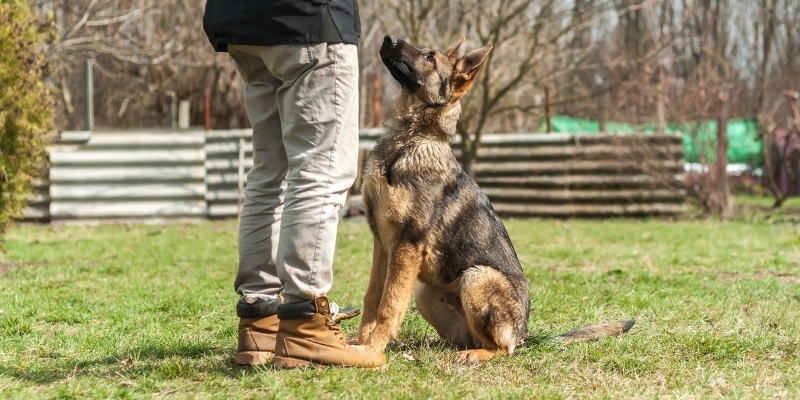 | | Four tips for a super shepherd! | | | If we say “German Shepherd”, do you picture a focused and courageous working dog? Or a loyal and calm family companion? This special breed can be all of these things, with the investment of proper socialisation, training and healthcare. Here are four ways to help get the best from a German Shepherd.
1. Good socialisation, early!
Given their strong natural instinct for guarding, and their potential for developing a highly-strung personality, it is important that you make sure your German Shepherd receives positive socialisation experiences during his or her critical socialisation period (from 3-14 weeks old) and thereafter. This can be achieved with the guidance of a well-run puppy school, during low-risk outings prior to full vaccination protection (ask our vets for more information on this), and by utilising positive-reinforcement training. Did you know that German Shepherds generally have a narrower socialisation window than other breeds? This makes it critical to get going on positive social interactions early in puppyhood.
2. Mental and physical stimulation
German Shepherds are active and intelligent, and require daily exercise and regular mental stimulation. If they aren’t given an outlet for their energy, they are more likely to develop behavioural issues like problem barking. They are smart enough that if they aren't given a job to do- they will become self employed. As well as energetic daily walks and ball games, consider ongoing obedience training, agility runs or nosework, plus long-lasting dental chews and puzzle toys.
3. Joint support
German shepherds have a predisposition to certain joint conditions, particularly hip dysplasia. It’s best to purchase a pup from parents with good (low) hip scores on hip health testing. You may also consider booking in for hip x-rays to assess your pup’s hips. German Shepherds of all ages benefit from being kept in a slim, healthy body condition to reduce excessive strain on joints. In addition to this, middle-aged to older dogs often benefit from joint health supplements, like 4cyte gel.
4. Regular veterinary checks and monitoring
As well as degenerative joint issues, German Shepherds are also more likely to suffer from gastrointestinal issues, skin complaints, autoimmune conditions, and certain cancers. Fortunately, the sooner these conditions are identified, the sooner and better that they can be managed. Our team recommends annual health checks for Shepherds up to seven years old, and twice-yearly checks thereafter, so any health issues can be detected and treated as early as possible.
If you have any further questions about keeping your loyal canine companion in peak health, ask our helpful team!
|
|
|
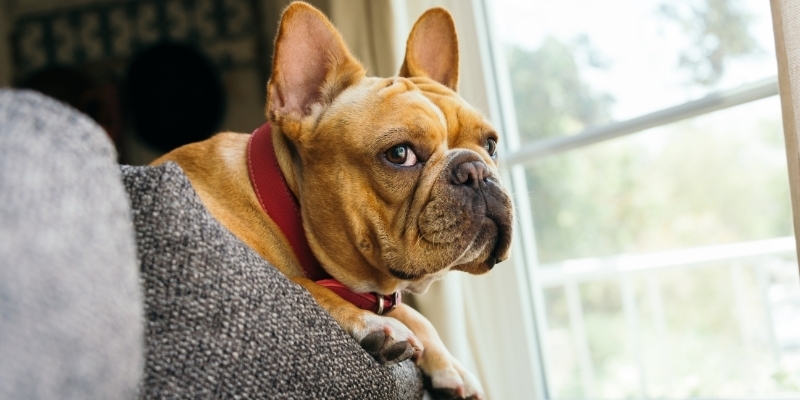 | | Nose-to-tail brachy care | | | If you’ve ever heard a veterinarian talk about a ‘brachycephalic’ animal, you might have wondered if they were talking about somebody’s pet dinosaur! In fact, this term refers to flatter-faced breeds such as Bulldogs and Pugs. These extremely popular breeds make wonderful companions, generally being playful and good-natured. But if you choose to welcome one of these cheery dogs into your family, it’s important to be aware of their potential health problems, and understand what proper healthcare for these special breeds can actually involve – practically and financially.
Breathing
Brachycephalic Obstructive Airway Syndrome (or ‘BOAS’) refers to the airway problems that frequently affect dogs with flatter faces, including narrow nostrils, excessive folds of tissue in the throat, and narrow windpipes.
These issues create increased airflow resistance, making it much harder for brachycephalic breeds to breathe, or to cope in hot weather. We are fortunate to be living in colder weather as these pets tend to struggle more when the weather is warmer and more humid. These issues generally worsen over time, meaning that energetic younger dogs who “seemed fine” during their early years may develop significant (and irreversible) breathing problems by middle age.
Our vets advise airway assessment and exercise assessment. Based on your pet’s airway condition, corrective surgery may or may not be required. Fortunately, the majority of surgical options can be offered at Orange Vet Hospital.
Spines
Unfortunately, there is an increasing issue with brachycephalic dogs being born with deformed vertebrae (spinal column bones), which can cause progressive spinal issues. This is an inherited condition. There are genetic links to having a more squishy face, and having factors that cause a squishy spine.
In severe cases of spinal deformation, specialist surgery is the only treatment option, however, a good outcome cannot be guaranteed. It’s therefore important to check with your breeder when selecting a pup, to ensure that they screen their potential breeding stock for such problems, and do not breed with animals that are known to have hemivertebrae.
Skin folds and tails
Brachycephalic breeds usually have skin folds around their noses, and may also have “corkscrew” tails (fused, curled tails) embedded into a skin fold near their bottom. These folds, particularly those around the bottom, often develop secondary irritation and infection and can be a real source of discomfort for your dog.
We recommend regular cleaning and drying of any skin folds. However, dogs with moderate-to-severe corkscrew tails often require surgery for long-term comfort.
If you are expecting the pitter-patter of pup paws into your household, our vets strongly advise considering the option of pet insurance (commencing as soon as your pup is picked up to ensure the best coverage).
For more information on brachycephalic health care, ask our vets! |
|
|
 | | Brachy cats are special too! | | | Much like brachycephalic dogs, brachycephaly is becoming increasingly popular in cats and other pet species too.
Breathing
Recent research has confirmed long held suspicions that cats have their own versions of Brachycephalic Syndrome too, which can also make huge improvements for cat welfare when surgically corrected. In fact, cats needing surgery had better heart, breathing and exercise scores after surgical correction.
Eyes
With a squishy face, all of the ducts and vessels that make the eyes work normally can also get squished. This makes good eye hygiene of utmost importance.
Grooming
Brachycephalic breeds tend to be very lazy groomers. It is unclear if that is because their faces make grooming difficult, or if there are skeletal differences, or hair differences, or all of the above! Regular brushing, and sometimes even shaving might be needed to make tame the hair!
For more information on brachycephalic health care, ask our vets! |
|
|
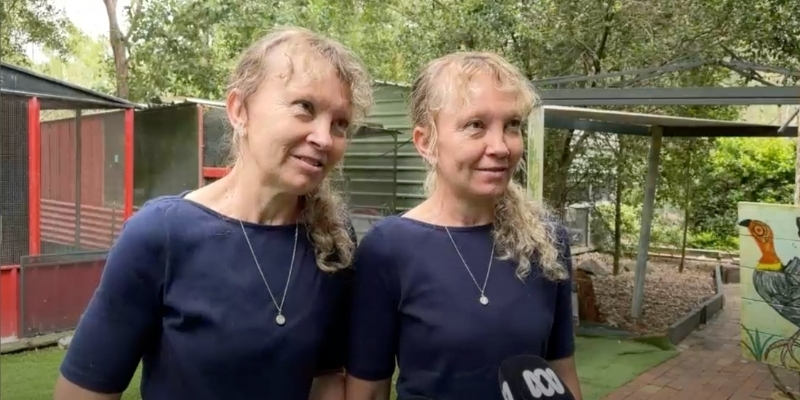 | | Animal News In Brief | | |
Seabird rescue saved by generous philanthropist
In the bushlands of Lanesborough, on the Sunshine Coast, identical twins Paula and Bridget Powers, known as The Twinnies, are renowned for their tireless rescue and rehabilitation of local seabirds. Once mentored by the Irwin family while working at the Australia Zoo, they're now wildlife icons in their own right, helping more than 25,000 seabirds since they opened their rescue centre 23 years ago. However, when their landlord decided to list the property for sale at an asking price well above what Paula and Bridget could afford, it seemed that the Twinnies Pelican and Seabird Rescue was itself in need of rescue. “I heard about the dilemma for these wonderful women," said philanthropist Dr Peter Sterwood, a longtime fan of the Twinnies wildlife work. Dr Sterwood stepped forward to buy the property, ensuring the future of Paula and Bridget's operation. “I heard they’d been stressed because the place was going to be sold out from under them… I knew I could help. These women are the bird healers of this area. They’ve been doing it for decades, they do it well!” said Dr Sterwood. “We’re still pinching ourselves. They should call him Saint Peter!” said Paula and Bridget (the women are known for speaking in unison). And as for their hopes for the newly-secured future of their rescue centre? “We hope we get the younger generation coming through who have the passion [that] we have”.
Read about how Dr Sterwood saved the Twinnies rescue centre from closure on ABC News and A Current Affair.
Photo: ABC News
Trippy toads and hallucinating hounds!
Yet another reason to be wary of the cane toad: bizarre accounts have been circulating amongst vets, biologists, and concerned dog owners in cane toad-affected regions of Australia recently. There’s a pattern emerging of family pets catching and licking cane toads for (we assume) recreational purposes! Some go to great lengths to wilfully indulge in a hit of the milky venomous secretion released by cane toads through a gland on their back. “Some dogs sniff them out. So the toad will be hidden, the dog can't see them, and they'll actively go hunting for them. The others will see them and chase them,” said animal pathologist and toxicologist Rachel Allavena from the University of Queensland. Yes, you read that right: these dogs literally ‘chase the high’ around their garden. "[We] assume they must enjoy it because there are some dogs that get 'addicted' to it," said professor Lin Schwarzkopf, a biologist and amphibian expert from James Cook University. "A friend of mine who's a vet was saying that there are dogs that people have locked up in chain-link enclosures and they've reached out a paw through the fence to get the toads," Professor Schwarzkopf added. It might be amusing to imagine a pooch on a psychedelic adventure, but it’s crucial that pet owners remember toad venom is lethal in strong doses and is commonly known to kill dogs that consume too much. So while it’s known to contain hallucinogenic chemical compounds, wilful ingestion is a dangerous habit to be discouraged at all costs.
Learn more about the dangerous new trend among fur(kids) on ABC News.
Scam-alert: protect yourself against fake puppy adoption swindlers:
Buyer beware: the Companion Animal Network (CAN) recently released a warning to the public regarding a spike in animal adoption scams targeting would-be pet owners on Facebook. “Sadly there is a rise in scam pet rescue groups targeting people who want to adopt from a shelter or rescue. Scammers are impersonating real animal shelters and rescue groups, or posing as people who want to rehome an animal,” said Australia CAN’s CEO Trish Ennis. 78-year-old Sydney resident Christine Jenkins was a recent victim of a pet adoption scam, she lost the $2,500 she paid to adopt ‘Milo’, a cavoodle that does not actually exist. “I didn’t know about pet scams and felt so stupid for not being more aware. I was in love with this dog and all reason went out of the window,” said Christine.
So how can potential adoptive pet owners spot the warning signs of a scam operation? Puppy Scam Awareness Australia warns that scam organisations typically run private Facebook pages and groups, use terms like ‘rehoming’ or ‘adoption’, and feature pictures of young, purebred puppies exclusively. Whereas legitimate animal shelters run public pages, describe themselves as ‘rescue’ groups, do not use the terms ‘rehoming’ and ‘adoption’, and provide contact details such as a website, phone, email and business address.
Prospective pet owners are encouraged to cross-check the background of nonprofit and charity organisations, genuine charities can be verified online at www.acnc.gov.au. Legitimate rescue services will also feature a mixture of animals varying in age and breed, including cross-breeds. Those looking to adopt are also encouraged to always speak with a service on the phone beforehand and to expect legitimate rescue services to be available to answer questions related to an animal, while also asking their own questions to determine if they will be able to provide a suitable home for the animal. It's common practice to organise a meet and greet with the animal and undertake a trial adoption where possible before finalising the adoption. Rescue organisations must provide veterinary paperwork regarding microchipping, vaccination, desexing, and overall health.
For more information on how to spot a puppy scam, visit the Companion Animal Network Australia website. |
|
|
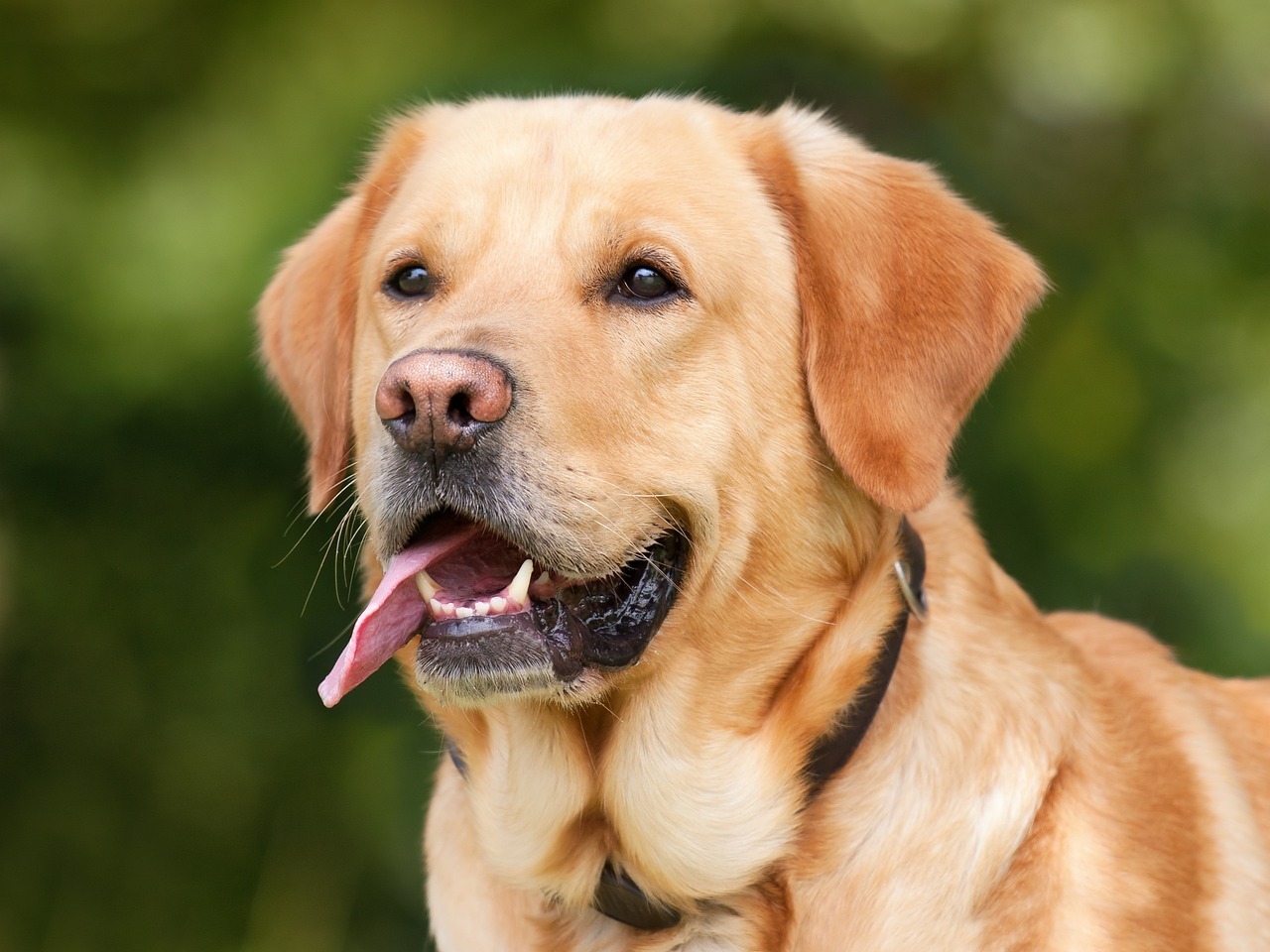 | | Labra-dabra-don't eat that! | | | There are three common traits that all Labradors and Labrador mixes like Labdradoodles and Cobber Dogs tend to share:
- Being very friendly
- Specialising in the “wag walk” (where their wagging tails may actually help to propel them forward)
- They like eating. A lot. Not necessarily food.
Sometimes, however, our Labrador friends (as well as plenty of other breeds too- Boxers, Beagles- we've not forgotten you!) are guilty of making terrible food choices. These poor food choices can be classed into three main categories:
1. Simple dietary indiscretion - a.k.a ‘sneaky snacks’
This involves a dog stealing and eating food items that simply don’t agree with their gut, such as fatty table scraps, dead wildlife, or items that we would not even consider food, such as the faeces of other animals!
This can lead to symptoms such as nausea, lethargy, tummy pain, vomiting and diarrhoea.
2. Toxins
The most common toxins ingested by nosey dogs tend to be human medications (e.g. ibuprofen), farm foods like feedlot pellets or toxic mushrooms, or household chemicals (e.g rat bait), which can lead to potentially life-threatening illness.
In some cases, spoiled foods (like mouldy bread) can also contain bacteria or toxins that can cause “garbage toxicity”, involving tummy upset and sometimes other symptoms such as muscle tremors.
3. Foreign bodies
Unfortunately, Labradors and other gobblers are known for eating things that aren’t actually food at all! Quite commonly, via surgery or the induction of vomiting, our vets retrieve foreign bodies such as socks, meat netting, toys, or personal sanitary items from naughty doggos.
Obstruction of the intestine with a foreign bodies typically causes persistent vomiting, which can lead to dehydration and mental dullness, as well as weight loss.
Treatment and prevention
If your pet vomits more than a few times, appears lethargic, or is having profuse or blood-tinged diarrhoea, it’s recommended to consult our team for advice. Depending on your pet’s condition, we may recommend supportive care such as anti-vomiting treatments and intravenous fluids, and sometimes abdominal imaging such as x-rays or ultrasounds.
However, if you suspect that your pet has eaten a toxin, we’d advise urgently contacting our team or the Animal Poisons Helpline for further advice.
Lastly, if your pet is a persistent perpetrator of poor food choices, have a chat with our team about how we can kindly help to redirect their problematic behaviour away from labra-dabra-don'ts toward labra-dabra-do’s! Puppy proofing your home can be a little more tedious than you might be expecting, and some of the sneakiest dogs get anointed with wearing a muzzle when not supervised to limit what can go in their mouths! |
|
|
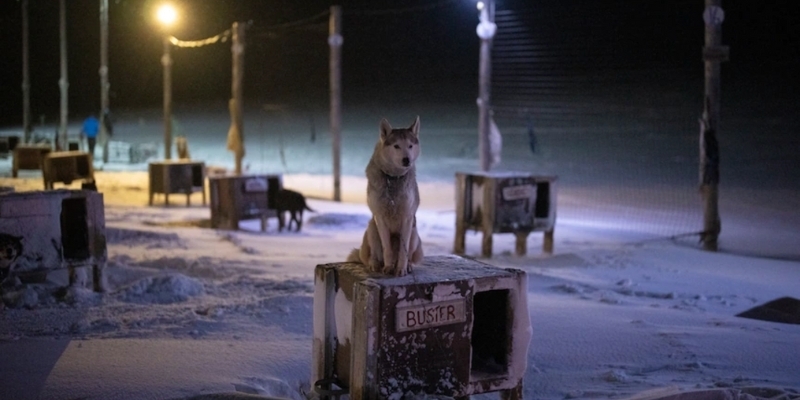 | | Arctic sled dogs lay low as the temperature rises | | | Planning a trip to the Arctic anytime soon? Make sure you pay a visit to Svalbard, Norway, where you’ll find 300 of the fluffiest and friendliest sled dogs this close to the North Pole! In fact, the town of Svalbard is close enough to the North Pole to experience permanent darkness throughout winter – but that doesn’t stop the family-owned and operated attraction ‘Green Dog Svalbard’, based just six miles outside the town.
Conducting sledding expeditions throughout winter, these dogs with their incredibly thick coats are largely undeterred by a -20 degree day. A mix of husky and Greenland dogs, highly sociable and energetic, these resident sled-pullers have been taking tourists to visit ice caves and snowfields since 2011.
But due to unseasonally warm weather, Greendog owners Karina Bernlow and Martin Munck have had to cancel multiple sledding expeditions in recent years to minimise the risk of their animals overheating in the warmer weather. Yes, it’s not the arctic cold, but global warming that presents the strongest threat to the Green Dog dogs.
“Because of reduced sea ice, much of the arctic is now warming four times faster than the rest of the globe,” said ice scientist Jason Box of the Danish Meteorological Society.
While she has witnessed first-hand the gradual shrinking of the archipelago and its ice caves, Ms Bernlow remains pragmatic and optimistic. Through the Green Dog website she maintains a blog, which features day-in-the-life experiences of the dogs and workers at the attraction, including ‘where-are-they-now’ stories about retired sled dogs and their adoptive homes around Europe.
“A heartfelt thank you to all the wonderful people who have provided the most stunning images to our website. You understand the art of showing Svalbard that we live and work in – and the Svalbard that we love so much – in a way that goes straight into the heart. You illustrate both the beauty and the magnificent … and at the same time how infinitely fragile the Arctic is. Let’s protect it with more environmentally friendly tourism!” reads one post. “What we can do is teach our children to take care of the planet.”
Learn more about the plight of Svalbard’s sled dogs on ABC News.
Photo: AP Photo - Daniel Cole |
|
|
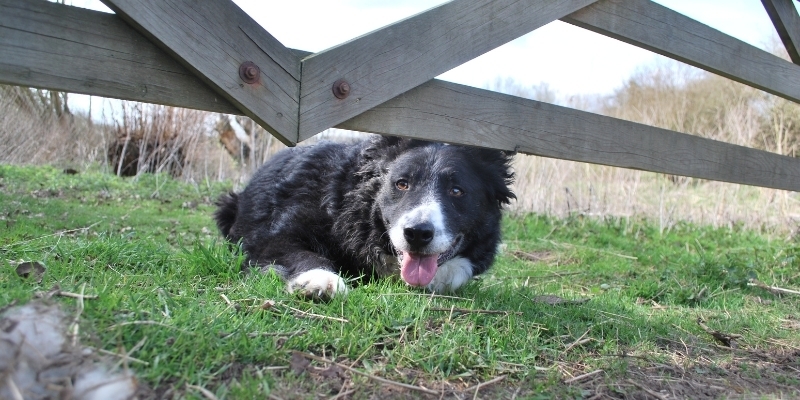 | | Working like a dog | | | When we think of modern-day working dogs, we tend to think of breeds like kelpies, cattle dogs and collies rounding up sheep and other livestock. However, other traditional working breeds such as certain gundogs, hounds, terriers and the arctic breeds can also have excess energy to burn!
Unfortunately, if these very active dogs are not given a sufficient outlet for their energy, they may become self employed and develop problematic behaviours, for example, reactive behaviour on walks such as lunging or growling, destructive chewing (think 'paper shredder'), digging tendencies ('landscaping'), or excessive barking.
If your dog has a surplus of energy to burn, read on for our top tips on how to help keep them busy.
1. Daily physical exercise
Very active dogs require adequate daily exercise. Depending on their size, this may necessitate 45-90 minutes of brisk walking a day.
However, high-intensity activities such as swimming, agility training, or ball-chasing can be a great way of efficiently tiring out very active dogs, provided they don’t have any special medical needs which would make certain activities unsafe (e.g. joint instability, arthritis). If you’re unsure about your dog’s general health, book them in for a thorough check-up with one of our vets.
2. Social opportunities
If your pet is sociable with other dogs, a regular activity such as going to the dog park, or doggy daycare is a great way of tiring them out physically and mentally. Safe inter-dog interactions and play, plus a whole lot of interesting new smells will make for one tired pupper on the way home! We recommend having dogs in these social situations up to date with all vaccinations, including Kennel Cough and Parainfluenza. This is part of our regular C5 vaccination plan.
3. Home environmental enrichment
Even if your dog is hanging out at home, there is a huge array of environmental enrichment activities you can keep them busy with. Depending on your dog’s preferences, you could consider:
- Setting up a sandpit for them to dig treats out of
- A home-made enrichment box
- Scattering treats around the garden for them to sniff out
- Interactive puzzle toys
- Snuffle mats
- Lickimats
- Long-lasting dental chews or Kongs stuffed with pet-friendly foods such as peanut butter, or even freezing these to last even longer
For more tips on helping your hectic hound to become a calm, contented canine, ask our knowledgeable team! |
|
|
This email contains comments of a general nature only and is not intended to be a substitute for professional veterinary advice. It should not be relied on as the basis for whether you do or don't do anything.
All content © PetPack 2022 |
|
|
This email was sent to:
email@example.com
Orange Veterinary Hospital
57 Molong Rd
Orange, NSW 2800
|
|
|
|